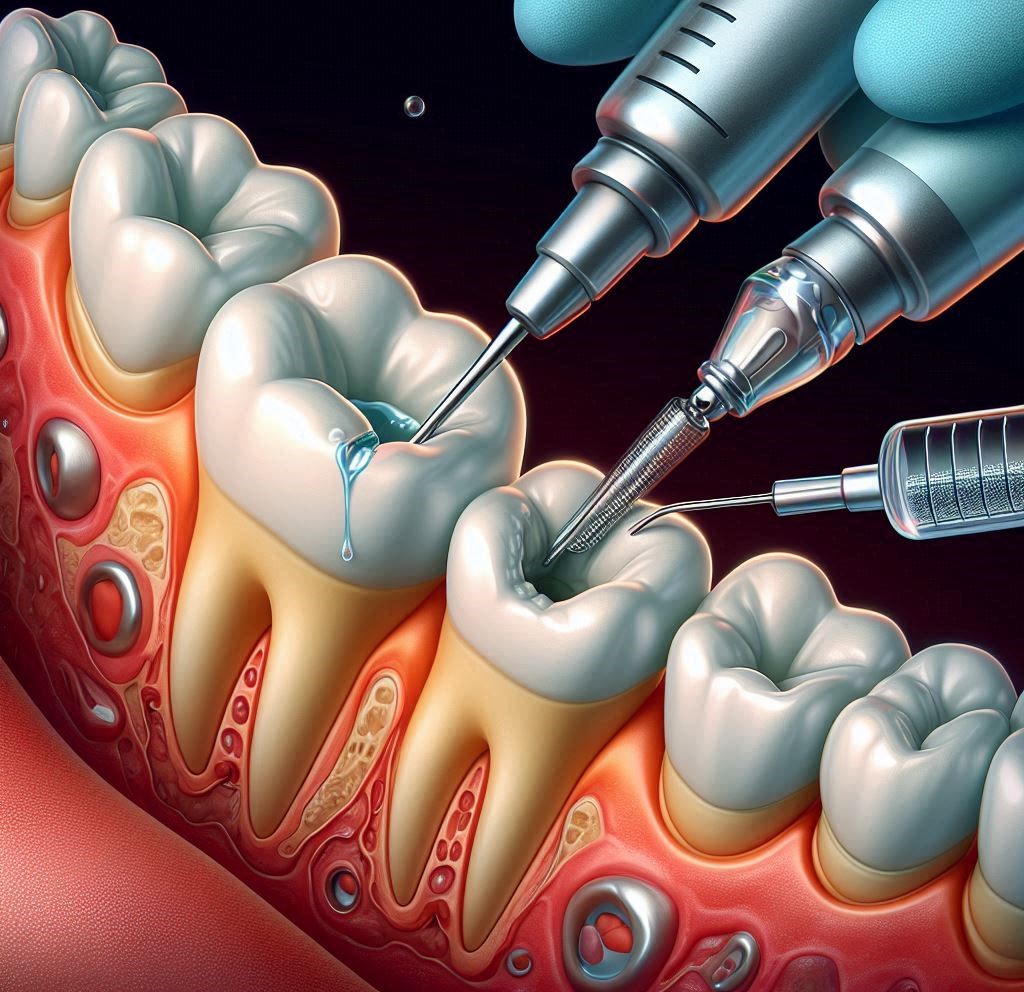Dental fillings play a crucial role in modern dentistry, helping to restore damaged teeth caused by cavities or decay. While they are designed to last for many years, they are not permanent. Over time, fillings can become compromised, requiring replacement to prevent further damage or discomfort. This comprehensive guide explores the various reasons why fillings need to be replaced, the types of fillings available, the role of materials in their longevity, and how to maintain your oral health to extend the life of your fillings. Whether you are looking to understand why your fillings might need to be replaced or want to learn how to take better care of your dental work, this article will provide valuable insights.
What Are Dental Fillings?
Before delving into why fillings might need to be replaced, it’s important to understand what they are and why they are used in the first place. Fillings are materials used by dentists to restore a tooth that has been damaged by decay. When a dentist finds a cavity, they will remove the decayed part of the tooth and fill the space with a suitable material to restore the tooth’s shape and function.
There are several types of dental fillings, including amalgam, composite resins, ceramics, gold, and even temporary fillings, each of which has its own unique benefits and lifespan.
The Materials Used for Fillings
Fillings are made from various materials, and each type comes with its advantages and disadvantages. These materials include:
- Amalgam (Silver Fillings): Amalgam fillings are made from a mixture of metals, including silver, mercury, tin, and copper. They have been used for over 150 years due to their strength and durability. However, they are noticeable because of their silver color, which is why they are often avoided for visible teeth.
- Composite Resins (Tooth-Colored Fillings): Made from a mixture of plastics and glass, composite fillings are tooth-colored and blend seamlessly with natural teeth. They are commonly used for fillings in the front teeth because of their aesthetic properties, though they may wear faster than amalgam.
- Ceramic Fillings (Porcelain Fillings): These are highly aesthetic and durable fillings that are resistant to staining. Porcelain fillings are often used for large cavities or for visible teeth due to their ability to mimic the appearance of natural teeth.
- Gold Fillings: Gold is one of the most durable materials available for dental fillings. It lasts for decades but is rarely used for visible teeth due to its color. Gold fillings are more expensive than other options.
- Resilon (Root Canal Fillings): Resilon is a newer material used for root canal therapy and offers an alternative to the traditional gutta-percha.
Each of these materials has its own advantages in terms of durability, cost, aesthetic appeal, and the types of cavities they’re best suited for. Over time, each material can experience degradation, which can lead to the need for replacement.
Reasons Fillings Need to Be Replaced
Dental fillings are designed to last a long time, but they are not invincible. Over the years, they are subject to the forces of chewing, temperature fluctuations, wear, and decay, which can compromise their effectiveness. Below are the main reasons why fillings need to be replaced.
Wear and Tear Over Time
The primary function of fillings is to withstand the forces of biting and chewing. However, no material is impervious to wear. Over time, fillings can experience wear and tear, especially if they are in areas of the mouth that undergo significant chewing pressure.
- Amalgam Fillings: Amalgam fillings are highly durable, but they can be subject to surface wear and cracking after many years of use. They are also known to expand and contract with temperature changes, which can sometimes lead to cracks in the tooth structure.
- Composite Fillings: While they are aesthetically pleasing, composite resins are softer than other materials like amalgam or gold. This makes them more prone to wear, chipping, or staining, particularly in high-pressure areas like the back teeth.
- Gold Fillings: Gold is one of the most durable materials, and it doesn’t wear as quickly as composite fillings, but it can still suffer from minor wear after several years of use.
Decay Around the Filling
Perhaps the most common reason for needing a filling replacement is the recurrence of tooth decay. While fillings restore the tooth’s function, they do not prevent the buildup of plaque or the formation of new cavities.
- Secondary Decay: Even though a filling seals the cavity from bacteria, a small gap between the filling and the tooth surface can allow bacteria to infiltrate. This is called secondary decay or recurrent decay, and it typically develops around the edges of the filling. If the decay goes unnoticed, it can compromise the tooth structure, leading to further damage and the need for a new filling.
- Plaque Buildup: Poor oral hygiene can lead to the accumulation of plaque and bacteria around a filling, which can cause decay in the surrounding tooth. The decay can eventually spread underneath the filling, requiring the restoration to be replaced.
- Old or poorly fitted fillings: A poorly placed or old filling may leave gaps where bacteria can enter and cause new decay.
- Microleakage: Small gaps between the filling and the tooth can lead to moisture and bacteria seeping in, which can result in decay that’s hard to detect without an X-ray.
When to replace: If decay is detected around the filling, it’s essential to replace it to prevent further damage to the tooth.
Changes in the Filling Material
Some types of fillings, particularly composite resins and amalgam, may degrade over time due to natural wear, temperature changes, or exposure to different foods and liquids.
- Composite Fillings: Composite fillings are made from a blend of resins, and they can degrade faster than amalgam or gold. They may stain or become more susceptible to wear, especially if a patient drinks coffee, tea, or wine regularly. Composite resins also have a tendency to shrink slightly over time, which can lead to gaps between the filling and the tooth.
- Amalgam Fillings: While amalgam fillings are extremely durable, they are not immune to the effects of time. They can expand and contract with temperature fluctuations, leading to microfractures in the tooth structure. In some cases, the metal in the filling can corrode, leading to dark staining or weakening of the tooth.
- Gold Fillings: Gold is one of the most durable materials for fillings and can last for up to 20 years with proper care. However, gold fillings can become discolored with age or exposure to acids and food. In rare cases, gold fillings may become loose or fractured, especially if there is excessive pressure or grinding.
- Ceramic Fillings: These are highly durable and stain-resistant, with a lifespan of 15 years or more. However, they can be brittle and might break if subjected to excessive pressure or trauma.
When to replace: If the material has deteriorated, cracked, or caused sensitivity, the filling may need to be replaced with a newer or more suitable material.
Tooth Changes and Shifting
As we age, our teeth may change in shape or structure due to factors like wear, injury, or shifting. These changes can affect the fit and effectiveness of a filling.
- Fractures or Cracks: If a tooth that has been filled is fractured or cracked, the filling may no longer provide adequate protection. A new filling is needed to restore the tooth’s structure and prevent further damage.
- Shifting Teeth: Over time, teeth can shift due to natural movement, orthodontic treatments, or tooth loss. A shift in the alignment of teeth can affect the fit of the filling, leading to discomfort or improper biting. In such cases, the filling may need to be adjusted or replaced.
- Tooth wear: Over time, a tooth might become worn down due to grinding, which can alter the way a filling fits.
When to replace: If the tooth beneath the filling has experienced significant structural changes, a dentist may recommend replacing the filling to restore both function and aesthetics.
Sensitivity and Pain Around the Filling
Another reason for replacing a filling is discomfort. If you experience tooth sensitivity or pain near a filling, it may indicate that the filling is either damaged or has deteriorated. Sometimes, a filling might be too large for the cavity, putting pressure on the surrounding tooth and causing discomfort.
- Temperature Sensitivity: If a filling is cracked or has worn down, it may expose the inner layer of the tooth (the dentin), causing temperature sensitivity to hot or cold foods and beverages.
- Pressure Sensitivity: If a filling is not properly adjusted, it may lead to pain when biting down. This could happen if the filling is too high or uneven, which causes discomfort when chewing.
6. Aesthetic Considerations
While functionality is a primary concern when it comes to dental fillings, aesthetics can also play a role in when fillings need to be replaced. Over time, certain filling materials, particularly amalgam, can become unsightly due to discoloration or staining. This may be a concern, especially in visible areas of the mouth, such as the front teeth.
When to replace: If you’re concerned about the appearance of your fillings, especially if they’ve become discolored or noticeable, you may opt for replacement with a more aesthetically pleasing material, such as a composite resin or ceramic filling.
Preventive Measures to Avoid Early Replacement
While fillings are not permanent, there are several things you can do to maximize their lifespan and reduce the need for early replacement. Preventive care is key to maintaining both the health of your teeth and the longevity of your fillings.
Proper Oral Hygiene
- Brush and Floss Regularly: The best way to prevent the need for filling replacements is by maintaining excellent oral hygiene. Brush your teeth at least twice a day using fluoride toothpaste and floss daily. This will help reduce plaque buildup and prevent decay around your fillings.
- Use Mouthwash: Mouthwash can help to kill bacteria and reduce plaque buildup, especially in areas that are difficult to reach with a toothbrush and floss.
- Visit your dentist regularly: Routine checkups can identify any potential problems with your fillings before they become more serious.
- Avoid excessive biting forces: Be cautious with hard foods and consider using a mouthguard if you grind your teeth at night.
Avoid Hard or Sticky Foods
- Limit Sugary and Acidic Foods: Sugary and acidic foods can increase the likelihood of tooth decay and damage to your fillings. Limiting the consumption of sugary snacks and drinks can help preserve your fillings and overall tooth health.
- Avoid Chewing Hard Objects: Chewing on ice, hard candies, or pen caps can damage fillings and cause cracks in the material. Stick to softer foods to reduce the pressure on your fillings.
Regular Dental Checkups
- Routine Visits to the Dentist: Regular dental checkups are essential for monitoring the condition of your fillings. Your dentist can detect early signs of wear, decay, or fractures that may require replacement, allowing you to address problems before they become more serious.
- X-Rays and Monitoring: Dentists often use X-rays to examine the condition of your fillings and the surrounding tooth structure. This helps to identify any potential issues such as decay around the filling or cracks that may not be visible to the naked eye.
Conclusion
Dental fillings play an essential role in the health and functionality of our teeth. However, over time, fillings can become worn, damaged, or compromised, leading to the need for replacement. Whether due to decay, wear and tear, or changes in the filling material, it’s important to monitor the condition of your fillings regularly and visit your dentist for checkups. By practicing good oral hygiene and taking steps to avoid damaging your fillings, you can maximize their lifespan and keep your teeth healthy for years to come.
SOURCES
American Dental Association. (2023). Dental fillings: Types and materials.
Ghodsi, M. & Ahmadi, S. (2022). Comparison of the longevity of different types of dental fillings. Journal of Clinical Dentistry, 48(2), 145-151.
Lynch, C. D., McConnell, R. J., & Jones, J. R. (2021). Advances in dental materials: How new technologies are influencing restorative dentistry. British Dental Journal, 230(5), 289-296.
Merritt, H. M., & Tobias, R. K. (2020). The effects of dental restoration materials on long-term dental health: A comprehensive review. Journal of the American Dental Association, 151(8), 654-660.
Miller, C. F. & Harris, G. S. (2022). Causes of filling failure and the need for early replacements. Journal of Dental Research, 101(6), 573-581.
Pitts, N. B. (2018). Dental caries diagnosis and management: A modern approach. British Journal of Dental Practice, 17(4), 234-242.
Pohl, J. F., & Scholtz, M. L. (2020). A review of tooth-colored filling materials: Characteristics, performance, and patient considerations. Journal of Esthetic and Restorative Dentistry, 32(3), 159-167.
Scully, C., Bhat, S. M., & Vitiello, P. A. (2019). The role of oral hygiene in the longevity of restorative dental materials. International Dental Journal, 69(4), 293-300.
Sundaram, A., & Sharma, D. M. (2021). Tooth decay and filling replacement: Predictors and prevention. Indian Journal of Dental Research, 32(2), 80-88.
Warren, M. K., & Gunnarsson, T. (2023). The impact of oral hygiene on the durability of dental fillings. Journal of Periodontology, 94(2), 112-118.
Weinstein, L. B., & Shaw, E. D. (2020). Composite versus amalgam fillings: Comparative analysis of material longevity and patient satisfaction. Dental Materials and Applications, 43(6), 738-745.
Zhang, L., Liu, Z. X., & Xu, H. (2021). Influence of temperature fluctuations on the durability of dental fillings: A laboratory study. Journal of Oral Rehabilitation, 48(3), 185-191.
HISTORY
Current Version
February 24, 2025
Written By:
SUMMIYAH MAHMOOD




